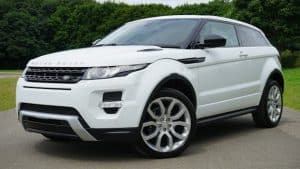Smart Dust: Microscopic Sensors in Transportation
Welcome to the world of Smart Dust – a revolutionary technology that promises to transform the transportation landscape as we know it. Imagine tiny, microscopic sensors embedded in every mode of transportation, from cars to airplanes, providing real-time information and communication capabilities. This may sound like something out of a science fiction movie, but the reality is that Smart Dust is already making a significant impact in the transportation industry.
The Rise of Smart Dust
Smart Dust, also known as Smart Particles, is a network of tiny sensors, no larger than a grain of sand, with embedded wireless capabilities. These sensors are so small that they can be easily dispersed in the environment, hence the name “dust”. The concept of Smart Dust was first introduced by researchers at the University of California, Berkeley in the late 1990s. Since then, this technology has advanced significantly and has found applications in various industries, including transportation.
Applications in Transportation
The potential applications of Smart Dust in transportation are boundless. One of the most significant benefits of this technology is its ability to collect and transmit real-time data. In the context of transportation, Smart Dust sensors can be embedded in vehicles, roads, and even transportation infrastructure, providing crucial information on road conditions, traffic patterns, and weather conditions. This real-time data can then be used for navigation, route optimization, and improving overall efficiency.
Enhancing Safety
Safety is a major concern in the transportation industry. With the use of Smart Dust, safety measures can be vastly improved. These tiny sensors can detect potential hazards such as accidents and traffic congestion, providing drivers with real-time alerts and alternate routes. This can significantly reduce the number of accidents and fatalities on the road. Furthermore, Smart Dust sensors can also monitor the health of the vehicle and detect any potential mechanical issues, allowing for timely maintenance and repairs.
Sustainable Transportation
The transportation industry is one of the biggest contributors to greenhouse gas emissions. Smart Dust sensors can play a crucial role in making transportation more sustainable. By constantly monitoring the traffic flow and road conditions, Smart Dust can help optimize traffic patterns, reducing congestion and idling time. This, in turn, can lead to a significant reduction in fuel consumption and emissions. Smart Dust can also be used in public transportation systems to optimize routes and improve efficiency, further reducing emissions.
The Challenges Ahead
As with any emerging technology, there are still challenges that need to be addressed before Smart Dust can become widely adopted in the transportation industry. One of the major concerns is the cost of implementation. As these sensors are still in the early stages of development, they can be quite expensive to produce and install. Another challenge is the need for robust and reliable wireless networks to transmit the vast amount of data collected by these sensors. Nevertheless, as technology advances and costs come down, these challenges can be overcome.
The Future of Transportation
The transportation industry is on the verge of a significant transformation, and Smart Dust is poised to play a crucial role in this revolution. With its ability to collect and transmit real-time data, Smart Dust has the potential to make transportation safer, more efficient, and more sustainable. While there are still challenges to overcome, the future certainly looks promising for this revolutionary technology.
In Conclusion
The potential of Smart Dust in the transportation industry is immense. From enhancing safety and efficiency to promoting sustainability, this technology has the power to revolutionize the way we move. As we continue to see advancements in this field, we can expect to see more widespread adoption of Smart Dust in the transportation sector. So, buckle up and get ready for a smarter, safer, and more sustainable future of transportation.










